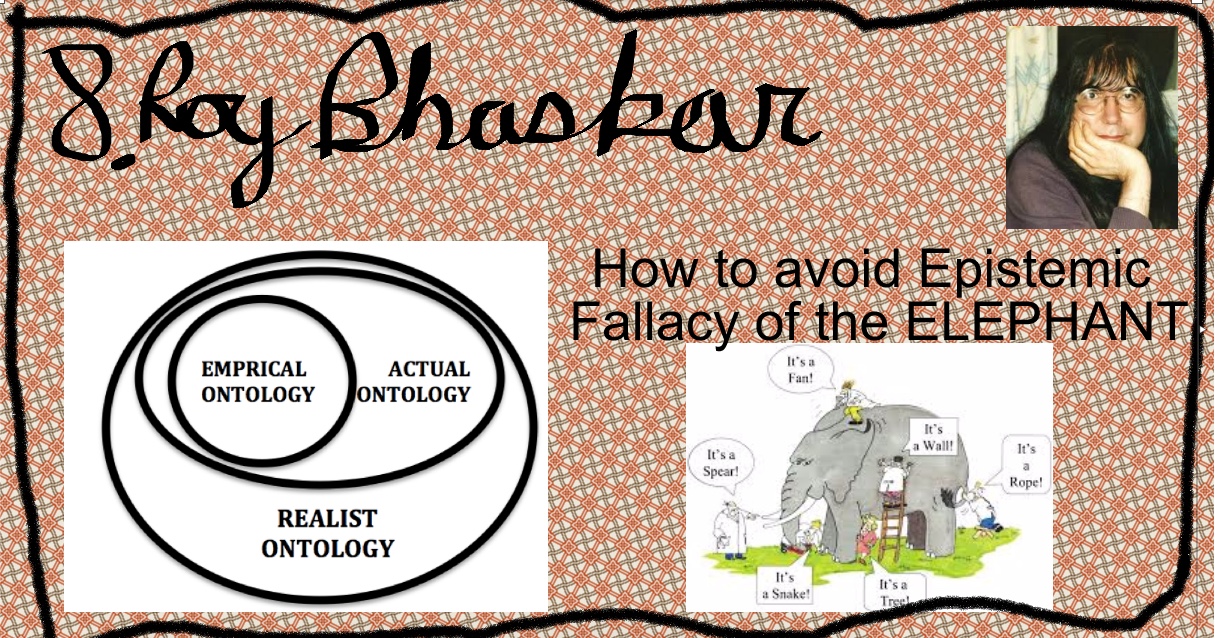Organizational Research Methods: Storytelling in ActionDavid M. Boje Book being prepared for Routledge, due
March 2018 (update 2024) To cite this document: Boje, David M. (2018, updated 2024) "Organizational Research Methods: Storytelling In Action", (March 15), URL = <https://davidboje.com/ORM_Storytelling_in_Action_Book/index> |
STREAM 8 – Roy Bhaskar Method of Critical Realism. Roy was born May 15, 1944 and died on November 19, 2014.
Bhaskar Critical Realism YouTube
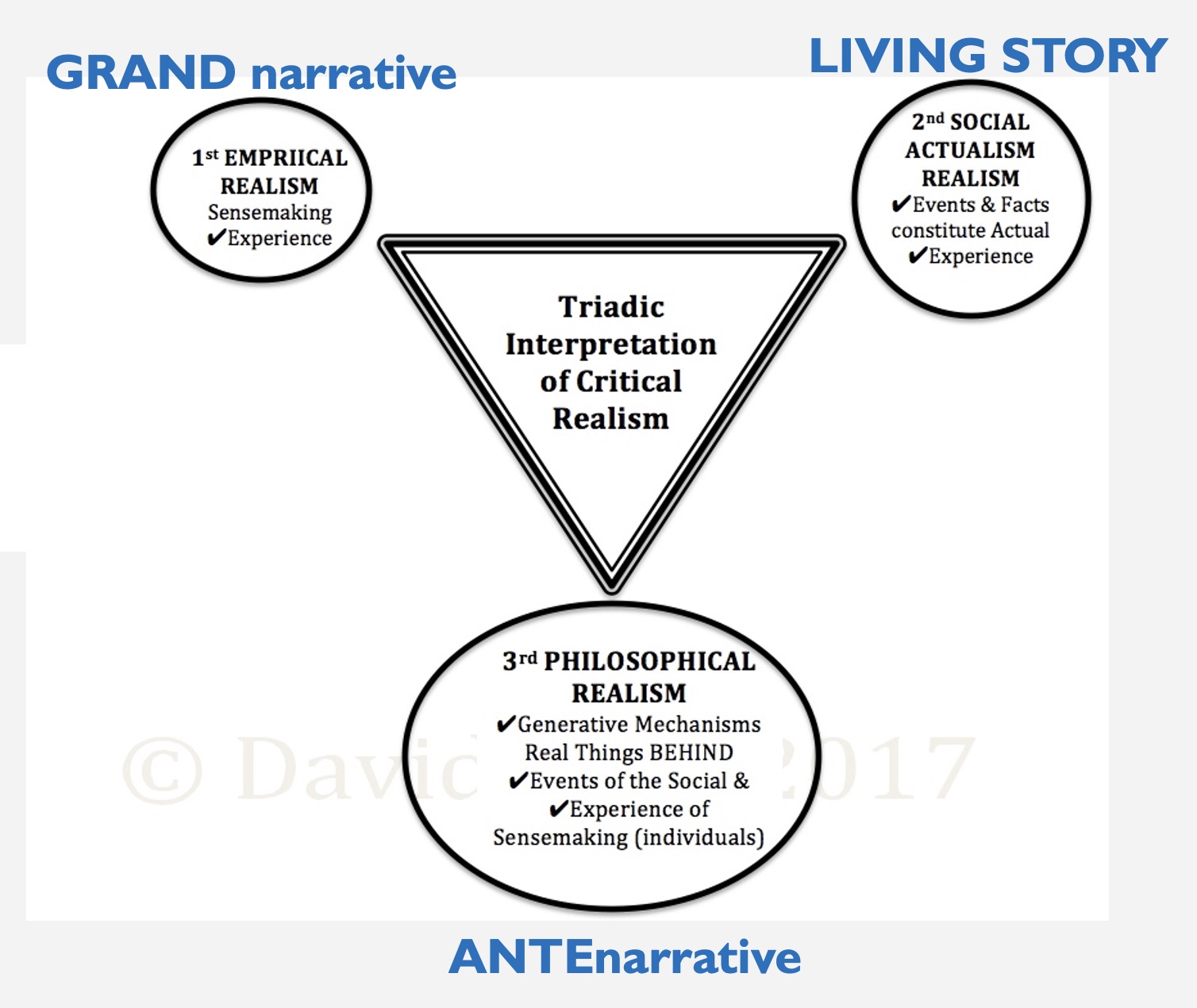
Figure 1: Bhaskar's model with storytelling theory update (figure by Boje, 2017, update 2024)
His 'critical realism' ontology does not address the other PRO’s (Collette, Barad, Savall, Deleuze, or Brier). Yet there is much that is similar to Charles Sanders Peirce and my own triads, as we will explore]). Despite his criticism of Hegel, Bhaskar picks up the idea of a dialectical process theory of identity-in-difference and ontological transformative being in succession of negations of the negations – nothing – becoming dialectics. He differentiates his critical realism ontology dialectics from the ontologies of Hegel, Marx, and Heidegger. Roy comes closest to developing multifractality ontology in his seven scales (see Boje, 2016, and Deleuze and Guattari 1987 chapter on space[Mandelbrot fractal].
Critical Realism - Roy Bhaskar

Figure 2: Triadic Interpretation of
Bhaskar Ontologies (figure by Boje, 2017, update
2024)
TRISKELE Triple Spiral is
also name for
Triple Goddess
A "triskele," also known as a
"triskelion," is an ancient symbol consisting of three
interlocking spirals or curved lines radiating
from a central point, often associated with Celtic
culture and signifying concepts like movement,
progress, and the cycle of life; the name itself comes from Greek words
"tri" meaning "three" and "skelos" meaning "leg"
making it literally translate to "three legs.
Roy took a spiritual turn and I took a
spiritual turn. So I am exploring these twists and
turns with triple spiral, the Triskele.
Roy Bhaskar (1975:2, 47. A Realist Theory of Science) declares,
"domains of the real, the actual and the empirical are
distinct." "Mechanisms, events and experiences thus
constitute three overlapping domains of reality, viz. the
domains of the real, the actual and the empirical"
(Bhaskar, 1975: 46). It is the 'Real' that has generative
mechanisms of Nature, events, and sensemaking experiences.
The domains are arrayed as follows: R > A > E. For
Bhaskar, generative mechanisms are sociomaterial. "For a
generative mechanism is nothing other than a way of acting
of a thing" (Bhaskar, 1975: 42).
In Domain of Actual (actualism, of
cause-effect laws in some closed system), "‘Criteria of
refutation must be laid down beforehand: it must be agreed
which observable situations, if actually observed, mean the
theory is refuted" in that closed system (p. 54). "Epistemic
atomic requires that events should be apprehended in raw
sense-experience" of retrospective sensemaking consciousness
(p. 72). The Domain of the Real, however, has the assumption
of open system, in relation to environment of interacting
systems which " the predicates ‘natural ‘social’,
‘human’, ‘physical’, ‘chemical’, ‘aerodynamical’,
‘biological’, ‘economic’, etc. ought not to be regarded as
differentiating distinct kinds of events, but as
differentiating distinct kinds of mechanisms" (p.
109).
A moment in the elaboration of dialectical critical realism is Hegelian in its dialectic, with some modifications. Bhaskar, says, "I use ‘moment’ in its Hegelian sense of part or phase of a whole (totality), considered either synchronicity or in its diachronic development, where parts and whole are both distinct from and internally related or essential to each other" (1975: footnote 2, p.xxi).
Bhaskar (1993/2208) says Hegel’s surrealist tradition is constituted by voids, absence, and normalization of past changes and future finding progressive ends, but misses the deeper generative mechanisms and structures of nature, and continuing dialectics of absence.
| Domain of Real | Domain of Actual | Domain of Empirical | |
|---|---|---|---|
| Generative Mechanisms & Structures of Nature |
✔ |
|
|
| Events & Facts |
✔ |
✔ |
|
| Experiences of Sensemaking |
✔ |
✔ |
✔ |
Looking at Roy's Publications, you can notice a Spiritual
Turn. It is a turn I experience in my own life.

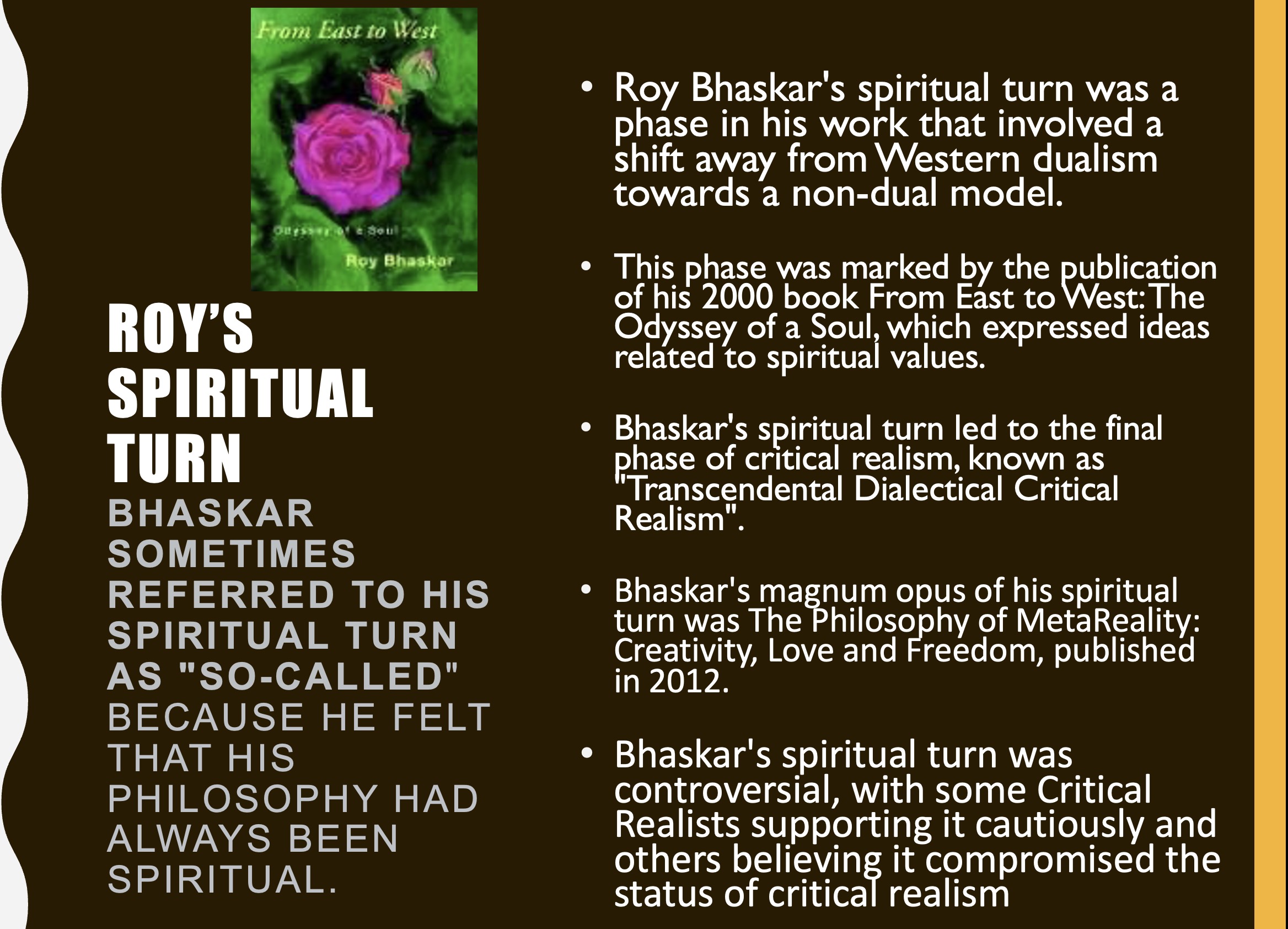
I have been theorizing Triskele
Storytelling in Spirals. The Triple Spiral of
Grand Narrative, Living Story, and Antenarrative each
theorized with 7 elements.

Looking at Roy Bhaskar's earlier writing,
before his Spiritual Turn, there is hardly a clue. Here
are some excerpts:
"But underpinning the undifferentiated ontology of empirical realism is an individualist sociology, in which people are regarded as passively sensing (or else as conventionally deciding upon) given facts and their constant conjunctions, that is, as passive spectators, absorbents (and accumulators) of a given world rather than as active agents, always in debt to the past, in a complex and multi-faceted one" (Bhaskar, 1986/2009: 64).
"My overall contention can be summarily stated. It is only if social phenomena are genuinely emergent that realist explanations in the human sciences are justified; and it is only if these conditions are satisfied that there is any possibility of human self-emancipation worthy of the name. But, conversely, emergent phenomena require realist explanations and realist explanations possess emancipator implications" (IBID, p. 69).
"in a second-order critique of consciousness, as in the case of the value form. It is analogous to Hegelian critique in that it sees reflection on the conditions of possible knowledge as at once reflection on a system of humanly produced constraints, but it differs from it, in that the medium of this reflection is explanatory theory, the form of the constraints are transcendentally real and historically defined, and the agency of their dissolution is transformative (e.g. class) praxis rather than speculative experience. It anticipates too the great insight of Nietzsche ‘critique’ that ‘among the conditions of life might be error’ but locates the source of error in structural causes, neither fated nor fixed" (IBID., p.134).
There is a "compatibility of ontological realism, epistemological relativism and judgmental rationality, the ‘holy trinity’ of critical realism ... At the same time, it also situated the necessity to think of reality in terms of at least three domains, the domains of the real, the actual and the empirical, with the real encompassing the actual and the empirical, but also including non actualized possibilities or powers and liabilities, either as manifest or as exercised though not actualized in a particular sequence of events, and where the actual includes the empirical but also things and events which exist or occur unperceived or more generally inexperienced by human beings. This latter aspect of the argument generated a critique of the actualism and reductionism prevalent in contemporary philosophies of science (and social science)" (Bhaskar, 2010: 1-2).
Realism Ontology > Actual Ontology > Empirical Ontology But for Empirical Ontology does not see beyond the five senses of 'experiential' sensemaking. Actual Ontology does not see any 'real' beyond the social constructivism of events, which are understood in experiential sensemaking. In short, realism ontology is post humanist (humans not the only species or beings of live on the planet or cosmos).
For Bhaskar, spirit is 'real' and we are all spiritual beings, aware of non-duality states. The 'real' is also material Eco-systems, geological systems, whole cosmos systems that are posthumanist, not just social constructions, or individual sensemaking (5 senses).
Hegel has a mystical shell, his ends, triumphalism, and failure to see the dialectic will carry on (Bhaskar, 2013a: p. 57). This is what Bhaskar (2013a) calls Hegel’s ontological mono valence (p. 57). Bhaskar wants to complete Hegel’s system of dialectic by developing stratified open system. If you end the dialectic, you end history itself.Hegel also committed epistemic fallacy, the fallacy of reducing ontology to epistemology (p. 57). What Hegel does do is his negative notion, nothing in becoming. “What I think Hegel did, and this is the rational kernel of dialectic, is that he produced a general theory of all learning processes” (p. 56). But the disservice Hegel did, is making dialectic ontologically Valentino. (p. 86) which leads to emasculation of the negative (p. 108).
In Bhaskar (1975/2008: xix) Mervin Hart wig introduces the 'Holy Trinity' of Epistemic Relativism, Judgemental Rationality, and Ontological Realism, which I illustrate next. Bhaskar (2010:1) inscribes the Holy Trinity once again with Critical Realism implications for laminated, stratified open systems.

Figure 3: Bhaskar 'Holy Trinity' of Epistemic Relativism, Judgemental Rationality, and Ontological Realism in Stratified Open Systems ( drawing © Boje 2017, update 2024)
Epistemic Relativism, Judgemental Rationality, and Ontological Realism an (Bhaskar, 2010: 1) answer different questions
ER= How to avoid epistemic fallacy of reducing ontology to epistemic relativism (the Elephant and blind men problem)?
JR = Which story is mos pragmatic, useful, or efficacious?
OR = What are different ontologies? This helps avoid the Mono valance fallacy (belief in one ontology fits all). Bhaskar places his stratified open systems notion here, by positing 7 levels of reality and 7 scales.
The Holy Trinity of ER, JR, and OR results in several formula
OR - ER = Sonic Fallacy (immediate ability to have knowledge of the world itself)
ER - OR = Epistemic fallacy (reduction of world to empiric experience (sensemaking) or making epistemic concepts primary to ontology)
Methodological Pluralism (MP) recognizing the limits of any one methodology, and the need to get at complex phenomena by different research methods to get at complex open systems in the world, and unpack the generative mechanisms behind.
Finally, causation relations and processes in these stratified open systems have four C's: (1) changing (dynamic not static of same cause-effects in all spaces, all times, all mattering), (2) complex (multiple factor assemblages of persons, things, discourses coming into relation), (3) contingent (historical rather than transcendent universal laws), and (4) conjunctiva (combination of powers & emergence) (see work by Margaret Archer, 1998).
Archer, Margaret. (1998). Realism and parthenogenesis. NY/London: Routledge.
Resolution, Re description, and Retro diction in Laminated Stratified Open Systems
"R1 [resolution\ signals the characteristic complexity of open-systemic phenomena, and registers the need to refer to a multiplicity of (successively) causes, mechanisms and theories in the explanation of the phenomenon" (Bhaskar, 2010: 4, bracketed addition, mine).
"R2 for the re description of these components in an (ideally, optimally) explanatory significant way; the third R or R3 for the retro diction of these component causes to antecedent existing events or states of affairs (p. 4).
"Laminated stratified open systems have these layers: (i) physical, (ii) biological, and more specifically physiological, medical or clinical, (iii) psychological, (iv) psycho-social, (v) socioeconomic, (vi) cultural and (vii) normative kinds of mechanisms" (Bhaskar, 2010: 5).
TO EUGENE:
Won (2006: 8) (click here, The Korean Journal of International Relations) extends the master-slave Hegel dialectic to systems theory, with an onomatopoetic twist to international relations and political systems: "By carefully reconstructing Hegelian dialectic of recognition, this paper illuminates its theoretical potentiality as onomatopoetic political systems theory of international relations that overcomes the theoretical limitations of the prevalent positivist conceptualization of system in International Relations."
Won (2006: 9) "maintains that the concept of system should be properly re-conceptualized in line with Hegelian dialectic of recognition." Won (2006 relies on Charles Taylor’s (1975: 148-70) interpretation of Hegelian master-slave dialectic. Hegel theorizes people as beings-embodied struggling with external embodiment. Embodiment is fundamental to the dialectical master-slave process.
"Theoretically speaking, it is quite possible to expand the Hegelian theoretical framework to other types of relations, as long as the theoretical components and their ontological presuppositions are kept in tact. Rather in such other relations is revealed the precognitive dialectic’s richness as a theory of social change and human development: that is, a diachronic system theory. To reiterate, the key elements in the master-slave dialectic are a) human beings as being materially and socially embodied, b) violence against others as the means to confirm their existence (mediation by physical force), c) formation of the dependent relation mediated by things as an outcome of b), d) slave’s achievement of material embodiment through the fear of death and the discipline of work, and e) eventual actualization of universal subjectivity aided by the social institution of property rights" (Won, 2006: 20-21).
Won (2010: 152, http://kaisnet.or.kr/resource/down/8_1_05.pdf) says "A careful reading of the dialectic points to a possible way to correct the shortcomings of Marx’s historical materialism."
"When understood in an expanded conception of social relations, Hegelian dialectic, in essence, is no other than a diachronic system theory on the development of human consciousness within the universalized social context of material relations, which is most clearly expressed in the contemporary civil society... his idealistic component of Hegelian dialectic opens up a whole range of different possibilities of social relation in the interaction system. For Hegel, the subjectivity of subject does not have to take on a particular material form in order to become universal (i.e., trade goods), as is the case with Marx. Insofar as the discovery of subjectivity is a matter of phenomenological dialectics, it is very likely that universality is derived from any kind of objective embodiment, regardless of whether they are material or social, if they can be recognized as such" (Won, 2010: p. 154-155).
"As the Hegelian dialectic of recognition shows, even when a particular type of recognition predominates at a given time, it does not necessarily foreclose a reversal of fortune by other means on the part of the weak or the strong. Recognition of identity is essentially an open process in which no indeterminacy is preordained although it is largely circumscribed by symbolic structures of communicative actions between interacting partners" (Won, 2010: 162).
This has implications for our CIW study of modern-day slavery: "Following the logic of Hegelian dialectic, we can assume that establishing such an institution in society is possible only when the masters are already fully constituted individual subjects so that they can contract out the property arrangement without recourse to violence: Won, 2006: 24).
Bhaskar (2008) develops a scalar approach to stratified open systems.
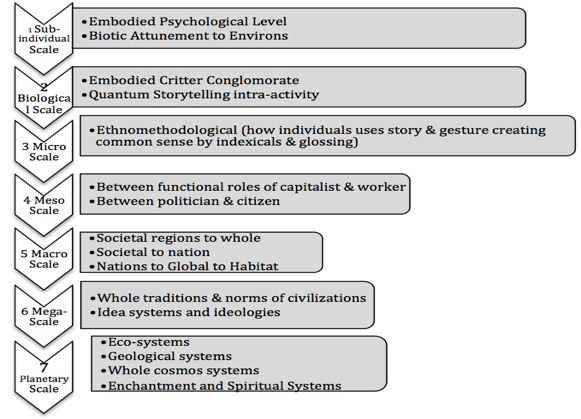
Figure 4: Bhaskar's 7 scales (adapted & embellished by Boje interpretation of Bhaskar, 2010 (figure by Boje, 2017)
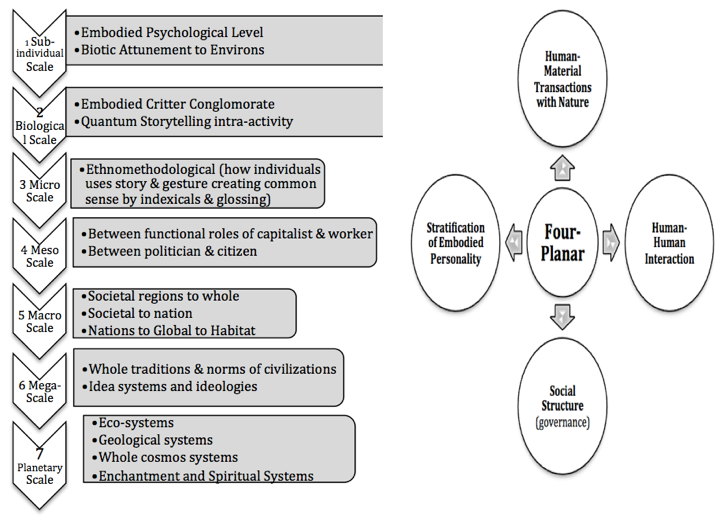
Figure 5: Bhaskar's dialectic is tiered and stratified ontology (figure by Boje, 2017)
"Dialectic is a seven-termed one—as follows (where ‘7A’ [seventh awakening] stands for non-duality, ‘6R’ [sixth realm] for (re-)enchantment, ‘5A’ [fifth aspect] for reflexivity understood as spirituality, ‘4D’ [fourth dimension] for human transformative praxis, ‘3L’ [third level] for totality, ‘2E’ [second edge] for negativity, ‘1M’ [first moment] for non-identity: 7A>6R>5A>4D>3L>2E>1M" (p. x).
Table 2 - Summary of Bhaskar’s 7 Levels of Reality (based
on reading of Bhaskar's work)
7A - Seventh Awakening [non-duality of
meta-reality or dime-reality of illusion & depression and
beneath that is anxiety, trust, & solidarity world that
can be basis of universal human flourishing]
6R - Sixth Realm [re-enchantment]
5A - Fifth Aspect [spiritual reflexivity]
4D - Fourth Dimension [human transformative
praxis]
3L - Third Level [dialectical critical
realism]
2E - Second Edge [absence, negativity, &
change in dialectical critical realism]
1M - First Moment [non-identity of scientific
or transcendental realism]
The Actual, the domains of events, and sensory experiences. But empirical is limited and reduced to retrospective sensemaking experiences of the five senses.
We can relate Bhaskar's 7 Levels of Reality to Ensemble Leadership and to Follett's Integrative Unity:
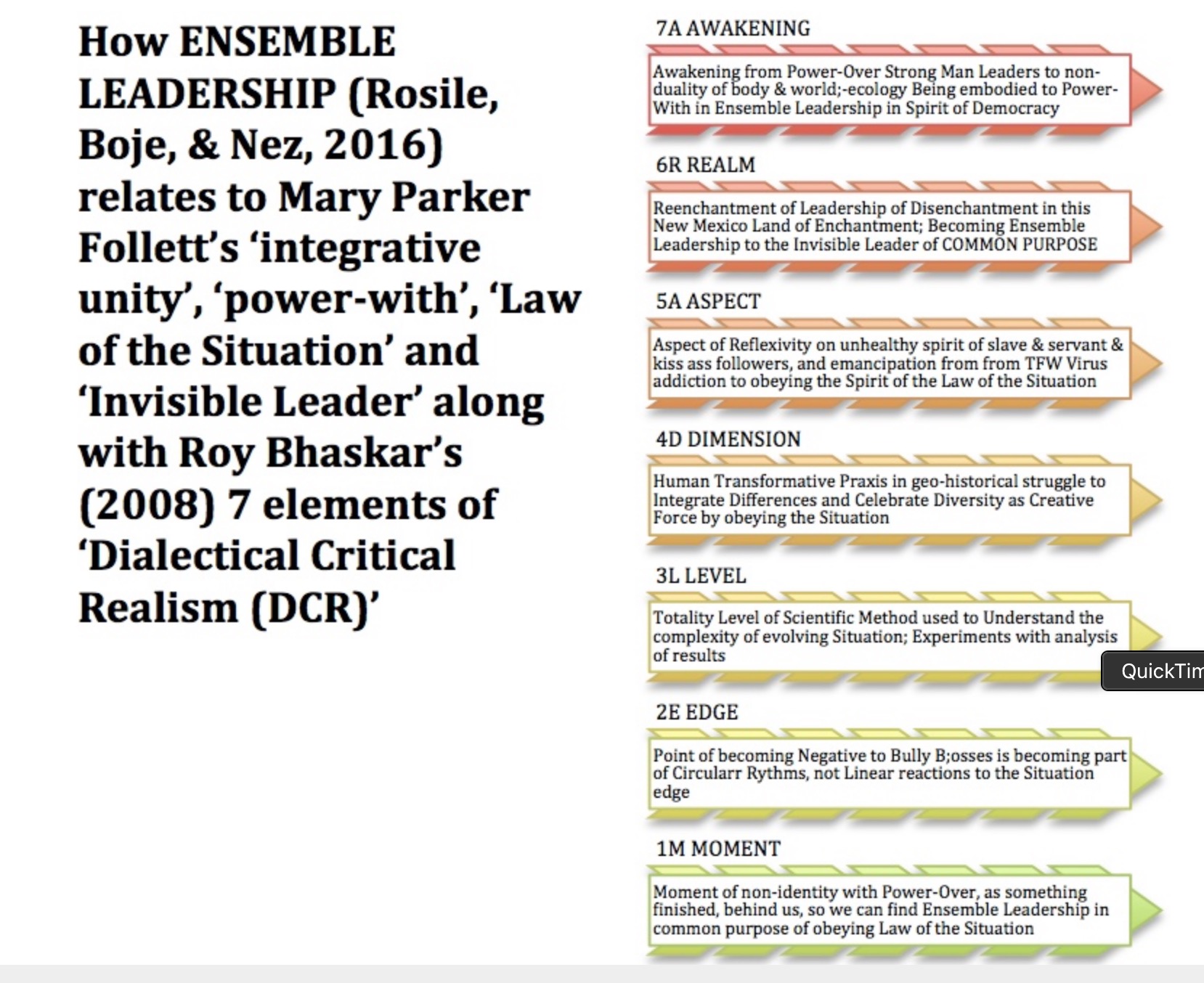
Figure 6: Bhaskar's 7 Levels of Reality to Ensemble Leadership and to Follett's Integrative Unity (figure by Boje, 2017)
"Empirical realism is underpinned by a metaphysical dogma, which I call the epistemic fallacy, that statements about being can always be transposed into statements about our knowledge of being. As ontology cannot, it is argued, be reduced to epistemology this mistake merely covers the generation of an implicit ontology based on the category of experience; and an implicit realism based on the presumed characteristics of the objects of experience, viz. Thomistic events, and their relations, viz. constant conjunctions" (Bhaskar, 1975: 5, A Realist Theory of Science).
Bhaskar (2009) argues that there are multiple co-contending ontologies, and that Hegel focused on mono valence (a single ontology).
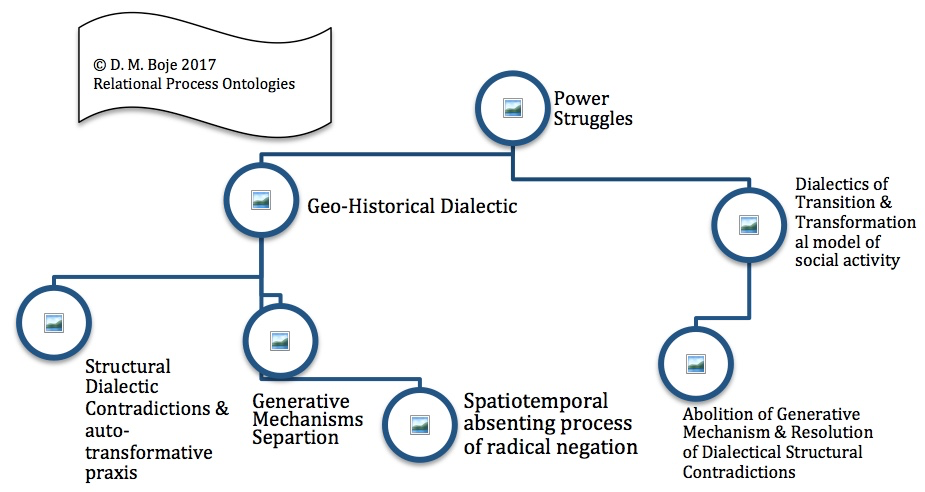
Figure 7: Bhaskar Multiple Ontologies (figure by Boje, 2017)
Above the most relevant forms of dialectic co-inclusion for understanding change (Bhaskar, 2009: 79, 184). Generative separation initiates power relation differences, and at same time power struggles change generative separation of actual life (Bhaskar, 2009: 184-5).
a. dialectical contradictions in modes of ontological stratification, absence, intra-activity, and attentive agency
b. social conflicts in the modes of power, struggles, constituted by or grounded in dialectical contradictions,
c. dialectical transitions over distanced space-time
Master-slave dialectical relationship of counter-hegemonic struggles, its sedimented structure of domination, separation of immediate producers from their labor, exploitation, and process of subjugation or control, and hermetical struggles over ideological ‘attitudes’, and power-relations (Bhaskar, 2009: 2, 65, 93, 109, 113, 120, 167, 184, 299).
Structural proportionality Hegel normalizes change as progress (progressive/nostalgic, emancipator). Transformation Model pho Social Activity (TAMS) exemplifies transformative negation and can interplay with ego-historical character in its social process, and social structures, and social life embodied in networks of social relations, including that mode of onomatopoetic activity, and hermetical struggles over generalized master-slave-type relations. (Bhaskar, 2009: 70-71).Radical negation (from suicide to self-realization, auto-subversive tendency to self-overcoming process) is consistent with multiple determination within a totality (p. 162)m 63 while transformative negation is consistent with exogenous sources of change. Geo-historical materialism is an ongoing affair of oppositions of trans factually efficacious processes and rhythms that have tacit complicity in political economy power struggles (Bhaskar, 2009: 70-71, 73, 79, 99, 125, 187).
Dialectic co-inclusion in the succession over distanced spacetime is rational core of Hegelian dialectics. Hegelian dialectics embrace generative mechanism separation, master-slave relations and praxis of the oppressed.
Earlier versions for Groused Theory suffer from the epistemic fallacy
"Verification ism indeed may be regarded as a particular form of the epistemic fallacy, in which the meaning of a proposition about reality (which cannot be designated ‘empirical’) is confused with our grounds" (Bhaskar, 1975: 27-28, A Realist Theory of Science).
"When science is doing normal science, when things are going well, epistemic ally it is natural to adopt what I call this ‘natural attitude’ in which you don’t posit ontology on the one side and epistemology on the other: you just have knowledge and you take it that that knowledge is of the world. Ontology really only becomes relevant when you are not satisfied with knowledge, when what passes for knowledge is patently wrong or absurd" (Bhaskar, 2007: 192, Theorizing Ontology, pp. 192-204 in Clive Lawson, John Lat sis and Nun Martins (Eds.) Contributions to Social Ontology, Oxford/NY: Routledge).
I agree: What passes for knowledge in organizational research is patently wrong or absurd.
Bhaskar (2007: 193) "distinguished the domains of the real and the actual and two types of system – open and closed systems. The fallacy of supposing that you could’t do ontology was what I called the epistemic fallacy."
Bhaskar (2007: 196) has this critique of Heidegger ontology:
"Heidegger makes a distinction between the ontological and the tonic, he points out correctly that the intercourse of human beings is one that has an interior, so that when I look at someone over there and I see a frown on his face or he says ‘I don’t understand’ then I need to relate to that interior. That intersubjectivity is just as important an aspect of language as referential detachment. Heidegger of course was wont to contrast his rich internal totalities of the human world with
the cut and dried world that he assumed operated in science. But of course the scientist
is engaged in therapeutics as well, a hermetic of understanding other beliefs and indeed other sciences, including importantly as necessary means of their own innovative activity, unraveling new and deeper structures, the knowledge of which will in turn be potentially critical of beliefs and actions uninformed by them..."."We need not make the chronic mistake of the sociology of knowledge, which reasons in line with the epistemic fallacy, from the fact that all knowledge is social to the fact that all knowledge must be about society. That is a major mistake that again comes from assuming that we can’t have specific conclusions about the world, knowledge of particular aspects of being. So we can make a balanced judgement on Heidegger. Natural science also involves intersubjectivity, therapeutics of inquiry and communication and critiques of beliefs and
actions, so that social knowledge is involved in our knowledge of the natural realm. But this transitive implication of the social for our knowledge of the natural realm should not obscure the intransitive differences between them. The major difference is that natural structures do not depend on human agency and so internationalized conceptualize in the way that social structures do" (Bhaskar, 2007: 196)Bhaskar has this critique if Marx:
"Marx was what I call a material object realist. He also had a proton-critical realist view of science as involving movement from appearances to deeper structures that would explain them, but he never actually theorized this and so Marx’s innovations have always seemed to most Marxist philosophers and social scientists to be epistemological with the central epistemological category now becoming that of labor, with labor replacing Hegel’s category of spirit. That is fine as far as it goes: it is not a criticism of Marx that he had to concentrate on certain aspects of the totality. But where we could go wrong is if we assumed there was no need for ontology. Elsewhere I have argued that the rational development of Marxism does require something like a critical realist ontology – an ontology that it actually presupposes but does not itself theories" (Bhaskar, 2007: 196-197).
What is Bhaskar's solution to epistemological fallacy of modern science and to shortcomings he sees in Heidegger and Marx ontology?
Skinning (2007: 269) puts it this way "In critical realist dialectic, adapted from Hegel, the conceptual work performed in the identification and repair of an inconsistency, leading in general to an expansion of the conceptual field, is designated the σ and τ transform respectively."
Bhaskar's ontology is differentiated into multiple ontologies, and it is also stratified into levels of reality.
To some extent, the Hegelian dialectics thus shines through in the kinds of dialectics Bhaskar (1993) could bring to 4ht Wave Grounded Theory (GT):
1) Austerity: A dialectic of the otherness and difference that builds the stratified levels of Marxist ideological super structures;
2) Nothingness: A dialectic of absence, revealing how what is ignored matters when things change, transition, or transform;
3) Alienation: A dialectic of social isolation, a dialectic which can reveal our social unification as being dismissed or ignored, giving voice to local cultures on a global scale, revealing the marginalization of the peoples on the periphery by those in the center, integrating fragmented agency through unity; and
4) Voice: A group of dialectics that bring agency back to the now-tantalized periphery, that increase mutual recognition and respect for identity differences, that seek unity through diversity and decentralize transformative praxis, regressing against the status quo to create a stalemate against oppressors.
In these ways, the Dialectical Critical Realism offers ground and theory 4ht Wave Grounded Theory can use. earlier waves of Grounded Theory plays in what Bhaskar (2008) calls the sub-individual psychological level, reduces the individual biological level to cognitive and language skills, and has yet to venture into remaining levels of scalar reality.
1. Sub-individual psychological level
2. Individual, biological level
3. Micro-level (e.g. ethnomethodology)
4. Mose-level (functional roles of capitalist and worker)
5. Macro-level of whole regions or whole societies
6. Mega-level of whole traditions of civilization
7. Planetary level of whole cosmos
Here we will draw on dialectical critical realism (Bharat, 1975, 1993, 2010, and spiritual accents. We admit that Bhaskar’s work is controversial, with some critical realists ignoring the spiritual aspects, and others including them.
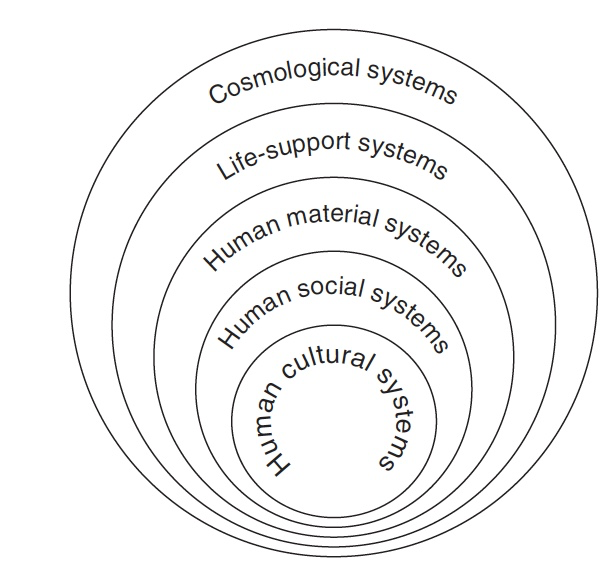
Figure 8: An interdisciplinary, laminated Open System account of the human condition plus disinterestedness ecological space (Kenneth Parker 2010 Towards a dialectics of knowledge and care in the global system, p. 209 in in Bhaskar, R.; Frank, Cheryl; Coyer, Karl Georg; Nessa, Peter’ Parker, Kenneth. (Eds.) Interdisciplinary and climate change: Transforming knowledge and practice for our global future. London/NY: Routledge Taylor & Francis Group)
Critical realism is a philosophy concerned with ontology,
defined as the study of Being.I find good emotions and good
organization in the latest crisis of global Being, including
climate change.
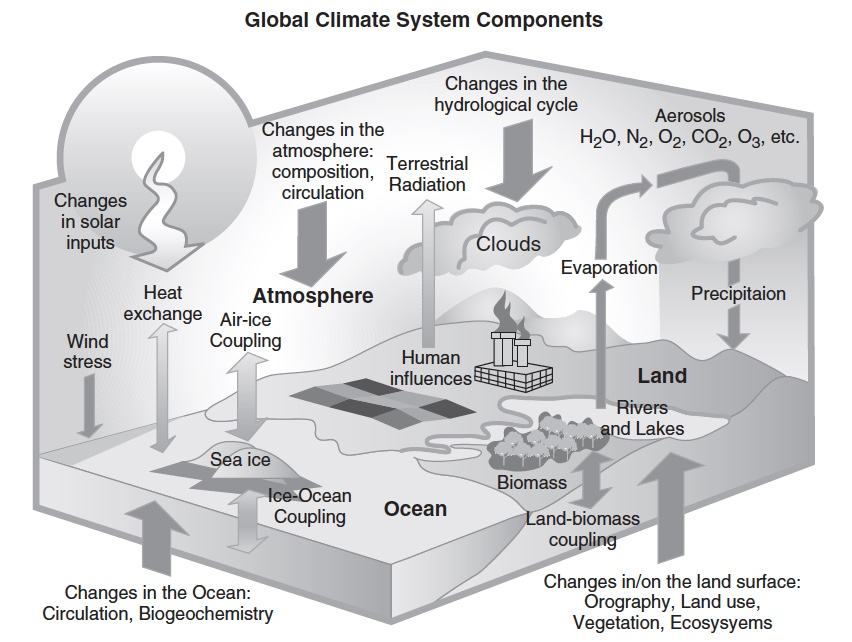
Figure 9: Components of Climate Change(Critical
realist interdisciplinary A research agenda to support
action on global warming Sarah Cornell and Kenneth Parker
2010: p. 27).
"The Earth is constantly changing on all scales of time and space" (NSF).
Cornell and Parker (2010: 28) "For example, the epistemic fallacy contributes to the notion that the structures and entities with which ecology has to deal are in some way less real, and hence less important, because they cannot be so certainly demonstrated. A critical realist ontology can combine ontological realism – the objective reality of the life processes on the planet – with a recognition of the necessary complexity and difficulty of prediction of phenomena in open systems."
First, several levels of reality in critical realism have spiritual relevance that can apply to spiritual praxis. Bhaskar (1975, 1993, 2010) theorizes seven levels of reality, and several are spiritual.
Level 6r (6ht Realm) is about re-enchantment.
Level 7A (7ht Awakening) finding non-duality, and overcoming the world of illusion, to find the 'real.This would be a pre-Cartesian, non-separation of body and mind person and nature, subject and object, etc.
Table 1 - Summary of Bhaskar’s 7 Levels of Reality (based on reading of his work)
7A - Seventh Awakening [non-duality of meta-reality or demo-reality of illusion & depression and beneath that is anxiety, trust, & solidarity world that can be basis of universal human flourishing]
6R - Sixth Realm [re-enchantment]
5A - Fifth Aspect [spiritual reflexivity]
4D - Fourth Dimension [human transformative praxis]
3L - Third Level [dialectical critical realism]
2E - Second Edge [absence, negativity, & change in dialectical critical realism]
1M - First Moment [non-identity of scientific or transcendental realism]
We would like to apply an analytic model to the level 3L. It has the initials REICH (Bhaskar, 2010: 4). From there, we then expand the analysis to show some points of convergence of spiritual aspects of Critical Realism spiritual praxis (noting this is a controversial move for many critical realists).
Bhaskar (2010: 14): "The deepening of ontology entailed by
dialectical critical realism involves its
extension from the understanding of being of
• Being as such, and as structured (1M); to
• Being as process (2E),
• Being as a whole (3L), and
• Being as incorporating transformative practice (human
agency)(4D).
The further extension of ontology entailed by the philosophy
of meta-Reality
incorporates the further understanding of
• Being as incorporating reflexivity (and spirituality) (5A),
• Being as re-enchanted (6R), and
• Being as non-dual (or as involving essential unity) (7
Z/A)."
Table 3: REICH of Basic Critical Realism without Spiritual Reality
R1 – Resolution of Complex Events into its Components (or parts)
R2 – Re-description of Components into Explanatory way
R3 – Retroduction of component causes to Antecedent Existing Events
E – Elimination of Competing Antecedent Causal Mechanisms
I – Identification of Causal Efficacious Antecedent Generative Mechanisms
C – Correcting by iteration of Previous Findings in light of above analyses
R1 – Resolution – Public university is an open-systemic phenomena (and many closed systems), with a multiplicity of (successive) cause, mechanisms, and theories about the latest budget crisis. “What is involved here is typically a conjunctive multiplicity of components” and “the logical form of open systemic phenomenon” (Bhaskar, 2010: 4). Universities and the State are complex events and components: With the collapse of oil and gas prices, our university and every other public university in New Mexico lost its funding by the State, which meant budgets in limbo, salaries frozen, no new hires with attrition. Our university, anticipated budget deficits was seen as a time to call in the business process reengineering (PR) consultants and pay them $622,700 for 10 days consultation and a PowerPoint presentation on how to save millions by changing span of control of staff.
Boje, Rosile, Denney, and Summers (1997) deconstructed
reengineering, concluding it was unscientific,
counter-productive, and destructive, yet highly popular. Cuts
were justified in personnel, while in another part of the
university, millions of state money was spent on new
buildings. A plan is being considered that would expand the
18-hole golf course (that uses one million gallons to water
greens) to 27-holes, and add a hotel and shopping mall. The
university’s football team continued it losing streak, but
picked million dollar practice games with ranked university in
other conferences. Students story: our team is used as tackle
dummies, expect to lose, to build confident of big league
teams. Much more money is now spent on marketing the value of
the degree on billboards and ads playing before movies started
in local theaters. The official narrative was NMSU was still a
top tier research university, and a premiere Hispanic-serving
Carnegie II-level university. Some faculty wondered if this
was an espoused theory, but the theory-in-use was to cover
over the lack of top-tier performance, and the strange ways
Hispanics were being treated in TrumpLand.
Weekly Chancellor and Provost narratives pointed to the
student, faculty, and alumni accomplishments. Onto logically,
NMSU’s open system is a reality in which there are many
different mechanisms at potentially emergent levels combining
to produce our novel situation. The are physical mechanisms
(building some new buildings, while de-budgeting people),
biological mechanisms (flat birth rate in the State),
psychological (it feels to us like faculty are more depressed
and demoralized than anytime in our 21 years there). There
appear to be psych-social and sociology-economic changes, and
speculation that students no longer see the ROI on higher
education investments. There could be cultural reductionism, a
clash of migrant culture, white culture, and Trump politics.
In short, this open system is a laminated system of many
components.
R2 – Re-description – What is the
appropriate level of description of the state of affairs at
NMSU? Is it the level of the University, the State Legislature
and Governor, the Trump agenda for higher education, the
transformation from knowledge society to knowledge economy, or
the colonizing of higher education globally by academic
capitalism? Does one professor’s meeting to be reprimanded by
an administrator matter? Or, does the Governor signing off to
never ever raise taxes matter? Or is this a national
trend or a global trend of neoliberal ideology to get
government out of funding for public education? Which of
the possible levels of description of socioeconomic phenomenon
is the explanatory critical one to focus on?
Things and events at NMSU are an intricate multiplicity of
explanatory mechanisms. For Bhaskar each instantiates
some universal law. The multiplicity of mechanisms have
mediation, differentiation from others. For example, the
reprimanded professor is a father of three, in a second
marriage, is a critical theory activist, and a fan of the
Rolling Stones. There is a specific ego-historical trajectory
involved, including how the birth rate is flat in New Mexico,
how being on border with Mexico makes immigration more
relevant, how the migrants are expected pick crops at lower
wages than would be paid to citizens.
R3 – Retroduction – refers to antecedent
state of affairs. Retro diction means an explanation or
storytelling interpretation of past actions or events inferred
from the universal laws that are shown to have governed them.
One universal I have noticed, is every time there is an
economic crisis at this university, the management department
is slated for reorganization. In 21 years, this is the 3rd
main economic crisis we have experienced. It seemed that with
each crisis, the administration suggest a strategic plan that
asks management to combine with the marketing department, to
have one department head, one less administrative assistant, a
reduced or eliminated PhD program. Now, admissions to our
Ph.D. program have been put on hold, apparently moving to an
every-other-year admissions scheme. In storytelling terms,
antenarrative is a process of discovering the nature of
relatively enduring generative mechanisms at work. It involves
reproduction. Reproduction is a form of logical inference
which starts with an observation of components of the system
(R1) their Re description (R2) then seeks to find the simplest
and most likely explanation (R3).
Retroduction and Reproduction are ways critical
realists can notice and care for antenarrative preparations
in advance of the next economic downturn. This
would include convincing legislators that higher education is
important to more than vocational development. It would mean
developing an understanding of the difference between
knowledge society and knowledge economy. In the later,
students are customers investing in education as ROI, faculty
are knowledge laborers whose work is patent able, and
knowledge is just a commodity traded on the global
market.
Here is an antenarrative analysis.
Civilization is not unconscious, ruled by a corporate and
governmental elite, which in the US this is the corporate
lobby. Do we really have democracy anymore? The world is
running out of natural resources, and all the rhetoric about
sustainability does not meet the simplest empirical
understanding of climate change, population explosion, the
migration crisis worldwide, and so on. The 1% wealthy are
amassing all the wealth, so much so, that half the world’s
population lives on less than $2 day.
Our universities act to reinforce a number of myths that keep
the generative mechanisms of economic and social inequality
out of the commonsense. As an exercise in retro diction and
retroduction, we might ask ourselves and our students whether
we believe the following nine myths, plus one more added by
Boje, taken from Chapman (2004: 98):
- We live in a democracy
- Our society is just and fair
- Economic growth is good for everyone
- Everyone can succeed if they work hard enough
- Society is a collection of individuals each of whom, by their choices and efforts, determine theory own fate.
- Success is the accumulation of wealth and possessions
- The wealth of society is managed best by its rate of economic growth
- Progress and development are by increased control and more complex technology
- Freedom is the ability choose in the market place.
I will add a 10the:
10. Liberal faculty are responsible for the decline of
student’s ROI in higher education.
E – Elimination of Competing Antecedent Causal Mechanisms – Now that we have elaborated a number of generative mechanisms of the transformation of higher education, we can eliminate some of them, and focus in. We suggest that by numbing down higher education and purging the university of the humanities, the result is the 1% can engage in wealth accumulation while convincing the 99% general public to vote against their own self-interests. This is done by propagandizing the 10 myths above, and masking the generative mechanisms of liberalism.
I – Identification of Causal Efficacious Antecedent
Generative Mechanisms – Here we narrow in on the
culprits. It is all about convincing the public that
university education is not about the ‘public good’, not about
social justice, it’s a leap backwards into Social Darwinism,
into the knowledge economy, into academic capitalism.
Critical realism begins with the assumption that empirical
experience (here I include retrospective sensemaking
narratives) limiting our understanding of events and things
(Bhaskar, 1975). The empirical sensemaking is embedded in the
actual, in events and things that are sometimes quite
independent of human sensemaking. It seems that empirical
is being Trumped (pun intended) by mythic. The empirical
and the actual are embedded in something still
wider, the ‘real’, in which often unseen, unheard
generative mechanisms, powers of the 1%, are manipulating
events and things. An antenarrative analysis of antecedent
generative mechanisms operating below the level of
retrospective sensemaking of empirical experience, and below
the actual events and things of history, can help us
understand the transformations happening in higher education,
in New Mexico, in US, and globally.
C – Correcting by iteration of Previous Findings in
light of above analyses - We continue our
analysis with the seven levels of reality in Table 1,
intertwined with four planes.
Table 2: Four-Planar "These are the plane
of our material transactions with nature, the plane of social
interactions with others, the plane of social structure and
the plane of the stratification of the personality" (Bhaskar,
2007: p. 200).
- Material transactions with nature – Boje chairs the Sustainability Council at my university, and we are struggling. We have lost our Gold Star accreditation rating from The Association for Sustainability in Higher Education (ASHE). We were about to be set back from Gold, below Silver, to Bronze. The Sustainability Tracking, Assessment & Rating System™ (STARS) system has raised the bar, and we can no longer get by with having narratives that lack policy statements. I asked the Provost to postpone the re accreditation until we can get some policies about our material transactions with nature. I continue to fight against the idea of expanding our golf course to 27 holes, as a waste of water in the desert Eco-region.
- Social interactions between people – Interactions are tense. The department meets, but we keep silent in front of the interim head, and in front of the dean. Other faculty who never complained before, now are complaining, but only one-on-one, privately, and not in university meetings.
- Social structures that endure - NMSU will likely endure, but it will have a tough time convincing people it is top tier. There is an administrative order, and it expands, to cover the needs of academic capitalism: the golf, the proposed mall-like shopping area (the “mall-unification” of campuses, turning them into retail hubs like airports have become), the intellectual asset capture, the sports teams, the privatizing of everything possible, and so on. This endures, but academic freedom and shared governance, does not feel like what it was in previous decades.
- Stratification of the embodied personality. There are administrative personalities, and many faculty personalities, we no longer recognize. We wonder if the trend towards limiting what is appropriate to be taught in the classroom, to be free of “politics,” to be limited to a strict definition of a “discipline,” is a Foucault pan optic gaze.
Bhaskar contends, (and here Boje agrees, while Rosile agrees
but believes that this is nothing new) that humanity is in
obvious crisis on all four planes. The material transactions
with nature have come into severe crisis, and projections of
11 billion in population by 2100 suggest it will only worsen
(Boje, in press). I (Boje) am both a spiritual
being and material being, composed of atoms and subatomic
particles, and waves of quantum energy. If subatomic
materiality is lacking then there is no higher level of
biological (cells and metabolism), and without these layers,
there is no psychological being, and no social being.
Regarding social interactions, in politics the distribution of
economic resources is inequitable but the 1% who control the
wealth appear unconcerned by this widening gap. The social
structures of economic and social inequality are not being
redressed by WTO, World Bank, European Union, and so on. The
stratification of embodied personalities seems to produce more
narcissism than ever before (e.g. Trump’s election).
Universities are complex systems with multiple factors
(persons, bodies, artifacts, things, buildings, etc.) in which
there are interpersonal, social structures, and forms of
storytelling expression. Universities are contingent,
history entities with multiple causal forces. Universities are
conjectural combinations of causal forces and emergence.
Universities are changing in dynamic ways, photogenic with
causes coming in and out of existence. The university is
many processes, structures, and productions. The
university is an imperfect assemblage of multiple factors held
together somewhat by agency, structure, and academic
cultures.
None of us has to be stuck in our New Mexico State University identities, or in our Academy of Management identities. New doors have opened.
These are moral emotions in response to alleged unethical
university, corporate, and government workplace behaviors that
have huge consequences to community and environmental
destruction. When the common sense is ‘climate denial’ and
‘knowledge economy’ then defense of climate action and efforts
to sustain ‘social good’ (knowledge society) are seen as in
appropriate practices that challenge liberalism. Liberalness
morality is a weapon used now by billionaires to capture more
wealth, justify environmental destruction, move working class
into the unemployed poor who also lack housing and healthcare.
Bullies, for example, that I know, seem not to
experience shame or guilt following oppressive acts of
humiliation and belittling of those more vulnerable (Housman
& Runes, 2012; Indelible & Gabriel, 2016,; Lineman
& Geodes, 2016; Walker & Jackson, 2016). Bullying for
example is a deficit of compassion, a failure of the duty of
care, a discrimination that adds to organizational
malfeasance. Bullying is an ethical transaction happening with
greater regularity in TrumpLand. In a downsizing
economy, a downsizing corporation or university, bullying is a
way of organizational change, a way to let the cost cutters
have their way, in a bureaucracy that has itself fallen into
madness.
Bhaskar’s Critical Realist Spiral theory
Roy Bhaskar (1993: 11) theorizes a ‘critical realist’
dialectical version of ‘double’ spiral. Boje (2014)
double spiral has updraft of liberator potential that opposes
downdraft of oppression. Boje, Elias, and Cast (2016) define
the terms of a Heideggerian double spiral with updrafts and
downdrafts: An updraft is defined as multiple organizational
trajectories converging in space and time to create positive
up surges in the environment. Conversely, a downdraft is
defined as multiple organizational trajectories converging in
space and time to create negative down surges in the
environment.
Critical realism theorizes a strict separation of epistemology
and ontology. Specifically, epistemological, it is a
distancing of the observer (disassociation by estrangement)
that can allow critical scrutiny of situations of hegemonic
inequalities in otherwise democratic oppositions. Finally,
this spiral of emancipator politics is an ontologically
grounded process that spreads both spatially and temporally.
As Bhaskar (Bhaskar, 1993: p. 48) elaborates:
“They may stretch forward temporally, spread outwards spatially, spiral inwards conceptually, mediate, switch or transfigure each other relation ally, perspective or configuration ally, structurally sediment, abstract, concertize, contradict and coalesce themselves”
As an emancipator political “reinforcing spiral”, it can bring about a counter-hegemonic struggle that is potentially “extending participation in democracy…. implementing qualities…. abolishing oppressive power” (Bhaskar, 1993: pp. 288-289).
Finally, the emancipator spiral can counter downward assimilation destructive spiral of “vicious degenerative” spreads that may undo democratic oppositions, and truncate (or disrupt) otherwise transformative dialectic processes (Bhaskar, 1993: p. 343-344). Bhaskar concludes, “It would be foolish to suppose that Hegel did not consider some of these alternatives” (IBID.).
HERE ARE THE REFERENCES PARAGRAPHS FOR EMANCIPATOR SPIRAL
p. 11: “These levels of deepening of critical realism should not be apostatized. What they specify is co-present and systematically ‘intermingle’ in reality. Furthermore, although, as in Hegel, it is the second moment — of negativity — that is the narrowly dialectical one, each of the others and the whole are implied in it as a system. Moreover, there are dialectics specific to each level. Thus the dialectics of 1M are typically dialectics of stratification and superstructure-formation or supersaturation, including emergence. The typical dialectical figures here are what I shall call the dialectical comment, which I shall write as dc', and dialectical reason (rd'), which I shall explicate in relation to Hegelian dialectic. I shall later link these figures to a characteristic pattern of problem-generation, resolution and critique in science and philosophy and to the theme of theory/practice inconsistency, which I shall see as essential to dialectic generally and pivotal to the emancipator spiral of transformation politics and (counter-) ideology. Dialectical reason includes, in meta critical analysis, displaying the common or dialectical grounds (d') of apparently opposed but mutually complicit dialectical counterparts or contraries, as, I shall argue, in the Kantian opposition between knowledge and faith, or more generally between anthropomorphism and transcendent — which I shall rigorously differentiate from transcendental — realism, or between empiricism and idealism. This includes the logic of what Derrida has called ‘supplementary’,14 and what Freud called ‘compromise formation’. Meta critical dialectical reason also isolates the duplicitous and dialectical parallelisms generated by philosophies of identity including Hegel's own. At 2E the dialectics are characteristically dialectics of change, including interchange (reversal), and transition. Determinate transformative negation, though it is present in some guise in all dialectics, comes to the fore here, but the most distinctive figure at 2E is dialectical process (DP') — as when, for instance, we are incessantly forced to revise our descriptive, taxonomic and explanatory vocabularies in the light of unexpected, and possibly recursive, epistemic and/or tonic change.”
p.48: “Conversely, welcoming negativity and later totality and agency alongside 1M non-identity, depth and transsexualism to our ontology situates some very interesting possibilities. What is present from one perspective, at one level, in some region may be absent from, at or in another. Presences and absences may be recursively embedded and systematically intermingled in all sorts of fascinating ways. They may stretch forward temporally, spread outwards spatially, spiral inwards conceptually, mediate, switch or transfigure each other relation ally, perspective or configuration ally, structurally sediment, abstract, concertize, contradict and coalesce themselves. Once we specifically anathematize causal efficacy, emergence, tensed spatializing process, totality and sew generics social forms, all sorts of typologies become possible: hidden depths, tangled loops, inverted hierarchies, mediated, virtual and hyper realities; holes-within-wholes (and vice versa), binds and blocks, intra- as well as inter-action; juxtaposed, elongated, congealed, overlapping, intersecting, condensed patio-temporaries; intertwined, dislocated and punctured processes. We shall explore some of these in due course. As it is, consider the crucial impact that the symptomatic silence, the telling pause, the vacuum, the hiatus or the generative separation possess. Or remember the effects of the non-occurrences, the undone or left alone — the letter that didn't arrive, the failed exam, the missed plane, the monsoon that didn't occur, the deforestation of the Amazonian jungle, the holes in the ozone layer, the collapse of ‘actually existing socialism’, the spaces in the text, the absent authors and readers it presupposes, both the too empty and the too full. Absences, immediately or on reflection, all.* There are intervals, voids and pauses, desire, lack and need within being; and such absences and their credential and actual absenting are, or so I {ER:599} am arguing, transcendentally and dialectic ally necessary for any intelligible being at all.”
pp. 288-9: “The dialectic of de-alienation can be broadened, as anticipated in §5, into a (7) generic dialectic of desire. If the dialectic of desire involves the desire to be desired and this involves the desire to be recognized, then, again through the logic of dialectical universality insofar as this involves the capacity to enjoy rights and liberties, it entails the real enjoyment of equal and universally reciprocally recognized rights and liberties, including the right to de-alienation and the enjoyment of health, education, access to resources and other liberties. And by an extension and deepening of the argument it entails the right of all subjects2 to be free of, and thus to the abolition of, the totality of master–slave relations, including internalized and intra-psychic ones, globally and inter-/intra-gene rationally and with due respect to the needs and rights of other species in the context of developing four-planar human nature. This dialectic rationally demands the satisfaction of the cognitive and empowering conditions for universal human autonomy, so that, in the first instance, if agents are so disposed, it must be included within level (4) of freedom, but then, in the next place, upon their coming to see their real interests, under the description of the free development of the concrete singularity of every other individual as a condition for their own free development. This takes us into (8) the dialectics of transition, and the two-way traffic between truth and freedom, form and content, on which I will comment immediately below. The generic dialectic of desire ([7] above) can be motivated in part by (9) the dialectic of desire for freedom. This turns on the consideration that human beings, by and large, want to be free, under some (sets of) description(s). And the logic of dialectical universality will rationally motivate them to accept freedom for all in dialectic ally similar circumstances, and then ultimately freedom as such (as dialectic ally valued) irrespective of circumstance. This will clearly depend not only upon immanent critique as part of counter-hegemonic struggle but also upon the possibility of mutually reinforcing virtuous spirals and spreads among freedoms — powers and needs — such as might be involved in extending participation in democracy, generalizing and safeguarding universally recognized rights, implementing equities (implicit in dialectical universality), abolishing oppressive power2and ultimately the totality of such (again by the logic of universality), relations, radically concretely regularized local, regional, and necessarily global (see §7) autonomic (implicit in absolute reason — drat' in dφ) and socializing the market without the compulsion or lack of opportunity to work subject to the recognition of the duty to care implied by the right to flourish. Let us now consider (10) the dialectic of universality itself. The T/P consistent fiduciary remark implies solidarity, ranging from moral and material support through empowerment, in its aspect of freedom, to participation in the depth tantalizing practice concerned. This may be implicated in a dialectic of social science from neutrality to explanatory critical rationality to emancipator audiology to dialectic per SE (the subject of the sequel to this book) and by transition from descriptive morality through immanent critique to re descriptive morality to formal missive meta critique through counter-hegemonic struggle to explanatory critical morality and meta critique (MC2 d', drip') through the tantalizing depth praxis to emancipator audiology.”
pp. 343-4: “It will be remembered in C1.7 that I argued that rd° ≥ rd† ≥ rd' ≥ rd'' ≥ rd''' ≥ rd'''' where rd° is a result, rd† is a resolution of a contradiction, rd' its rational resolution, rd'' conforming to radical preservative determinate negation, rd''' effecting our reconciliation to life and rd'''' mutual recognition in a free society. It is obvious that neither scientific explanations nor ego-historical transitions generally conform to rd''. Trans formative sublimation, or sublimation containing transformative negations, are far more frequent than the preservative Bunghole. But other possibilities abound, including the preservative reproduction of the opposition; the occurrence of vicious degenerative, dissipation, fragmentary, chaotic, devitalizing (externalizing), generally inverse-ambulatory spirals and spreads; the mutual ruin or non-preservative undoing of the contraries; the preservative undoing of their opposition accompanied by hierarchical inversion and inasmuch with or without erasure (associated with Derrida); the simple non-dialectical separation or disassociation of the poles; the absorption of one by another, with or without an internalization of their opposition; the grafting of the opposition onto another element or opposition producing a more complex, displaced and/or condensed form, and/or the simple indeterminacy, inalienability or differential interpretation of the outcome. It would be foolish to suppose that Hegel did not consider some of these alternatives. But his epistemological triumphalism, relentless teleology and constellation closure inevitably inclined him to the preservative Bunghole. In the at least as contradictory, but more sombre, world of the late twentieth century we cannot afford not to see this as only one possible figure of change.”
Definitions to help interpret Bhaskar
Shebeen or Bunghole is a German word with several seemingly contradictory meanings, including "to lift up", "to abolish", "cancel" or "suspend", or "to sub late". The term has also been defined as "abolish", "preserve", and "transcend".
Sub late - assimilate (a smaller entity) into a larger one.
"fragmented aspects of the self the subject is unable to sub
late"
chi·as·mus --- a rhetorical or literary figure in which words, grammatical constructions, or concepts are repeated in reverse order, in the same or a modified form; e.g. ‘Poetry is the record of the best and happiest moments of the happiest and best minds.’
Disassociation in general refers to the stepping back or distancing of the observer or reader from an object of scrutiny. explanatory context. NOTE: disassociation is sometimes spelled 'substantiation' Disassociation or estrangement allows for or facilitates a critical attitude.
References
Bhaskar, R. (2013a). From science to emancipation: Alienation and the actuality of enlightenment. Routledge.
Bhaskar, R. (2013b). A realist theory of science. Routledge.
Bhaskar, Roy. (1975/1978). A Realist Theory of Science. London/NY: Routledge Taylor & Francis Group. 1st edition 1975; 2ND edition 1978. Online at http://uberty.org/wp-content/uploads/2015/09/Roy_Bhaskar_A_Realist_Theory_of_Science.pdf (available for free online PDF).
Bhaskar, 2007: 192, Theorizing Ontology, pp. 192-204 in Clive
Lawson, John Lat sis and Nun Martins (Eds.) Contributions
to Social Ontology, Oxford/NY: Routledge
Bhaskar, Roy. (1993/2008). Dialectic: The pulse of freedom. London/NY: Routledge Taylor & Francis Group.
Bhaskar, R. (2009). Plato Etc: Problems of Philosophy and Their Resolution. Routledge.
Bhaskar, Roy. (1986/2009). Scientific Realism and Human Emancipation. London/NY: Routledge
Bhaskar, Roy. (2010). Contexts of interdisciplinary” interdisciplinary and climate change. Pp. 1-24 in Bhaskar, R.; Frank, Cheryl; Coyer, Karl Georg; Nessa, Peter’ Parker, Kenneth. (Eds.) Interdisciplinary and climate change: Transforming knowledge and practice for our global future. London/NY: Routledge Taylor & Francis Group.
Cornell, Sara hand Parker in, Kenneth. (2010). Critical
realist interdisciplinary A research agenda to support
action on global warming. Pp 25-34 in Bhaskar, R.; Frank,
Cheryl; Coyer, Karl Georg; Nessa, Peter’ Parker, Kenneth.
(Eds.) Interdisciplinary and climate change:
Transforming knowledge and practice for our global future.
London/NY: Routledge Taylor & Francis Group.
Won, GI Bung. (2006). Re-conceptualizing Hegelian
Master-Slave Dialectic as Chronic Systems Theory of
Inter-societal Relations. The Korean Journal
of International Relations, 46(5) 7-35
http://kaisnet.or.kr/resource/down/4_01.pdf
Won, G. Bung. (2010). Recognition of Estranged Other. 국 제정치논총, 50(3), 137-164. http://kaisnet.or.kr/resource/down/8_1_05.pdf
Parker, Kenneth. (2010). Towards a dialectics of knowledge and care in the global system. Pp. 205-226 in Bhaskar, R.; Frank, Cheryl; Coyer, Karl Georg; Nessa, Peter’ Parker, Kenneth. (Eds.) Interdisciplinary and climate change: Transforming knowledge and practice for our global future. London/NY: Routledge Taylor & Francis Group.
Taylor, Charles (1975). Hegel.
Cambridge: Cambridge University Press.
